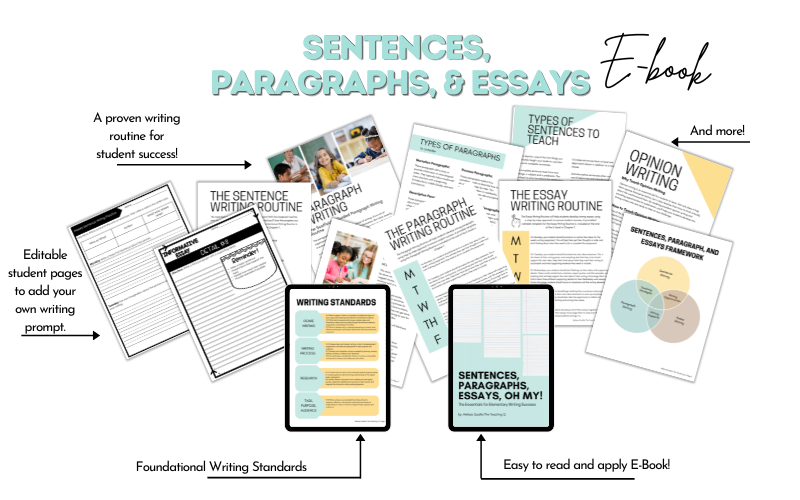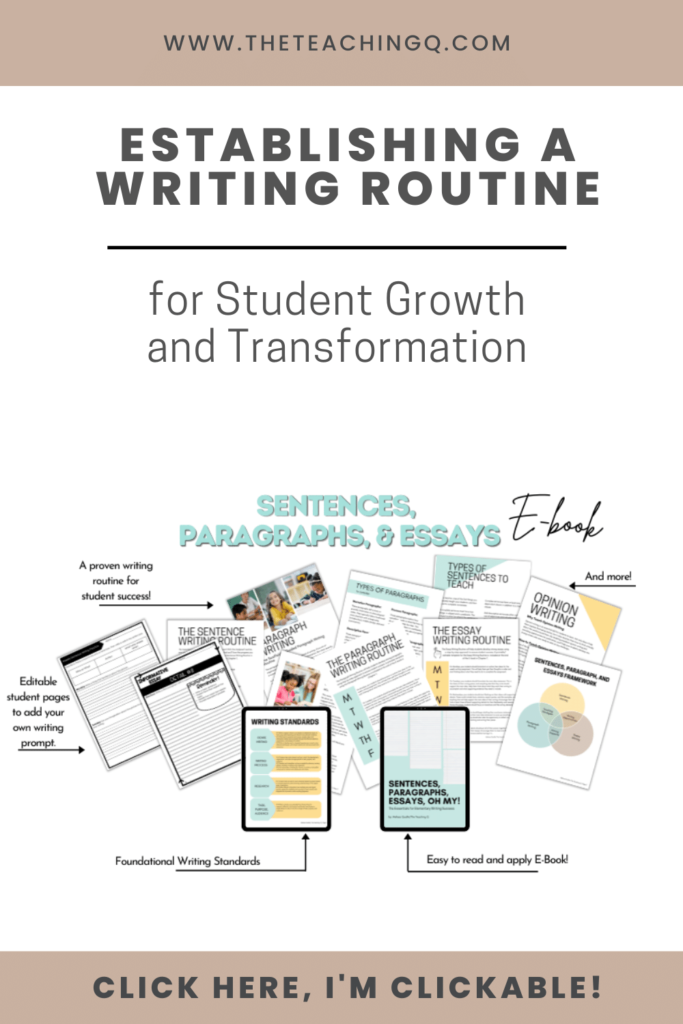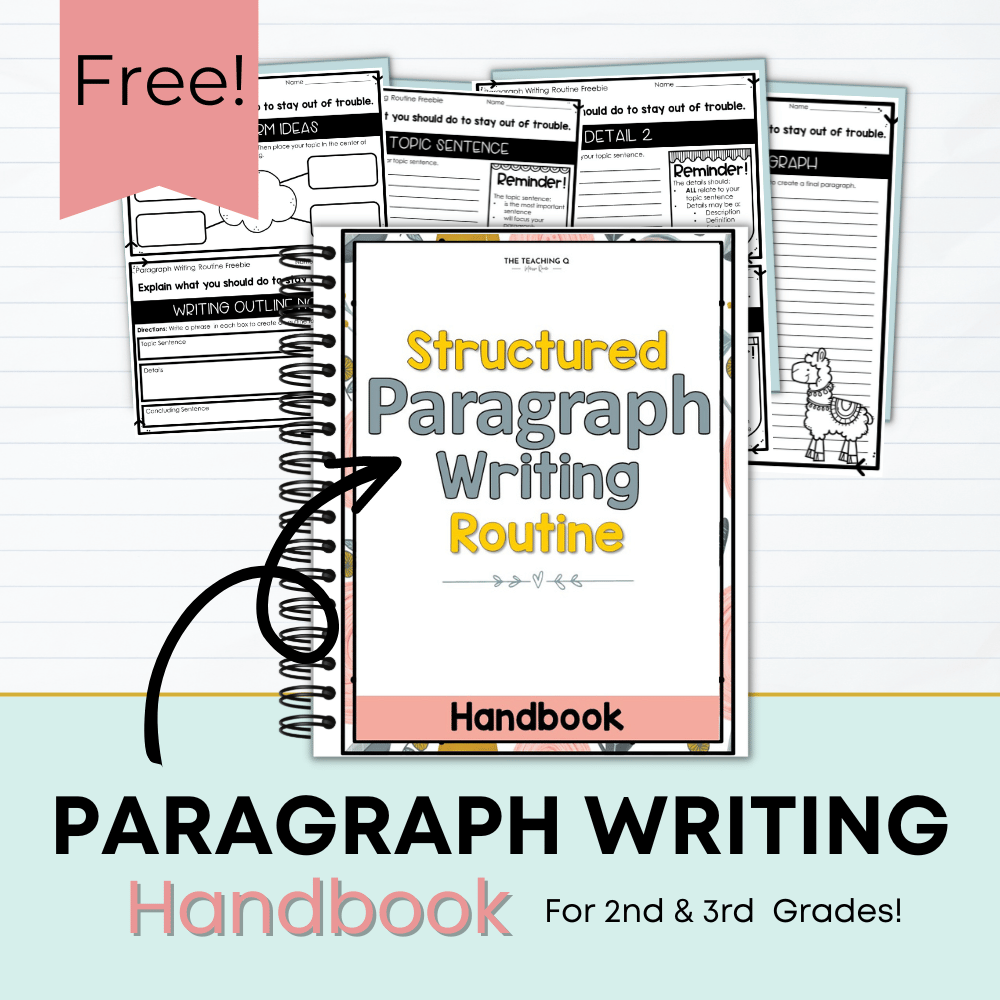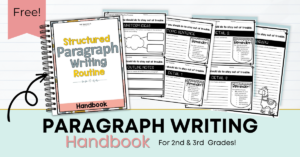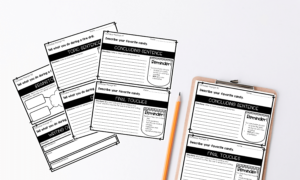What is it, and why should I create a writing routine?
If you’re a teacher, chances are you’ve heard it said that “routine is key to success.” But what does that actually mean? And more importantly, how can you create routines that will set your students up for writing success? In this blog post, we’ll take a look at the importance of routine in preparing students for writing success and explore some key areas to focus on when creating a writing routine.
When it comes to writing, having a routine is essential. Without one, students can easily become overwhelmed and lose their momentum. Creating a writing routine helps with organization and preparation, encourages productivity, and gives structure to the task. Writing routines should be tailored to each student’s strengths and weaknesses; for some students, this could mean outlining their plans before they begin writing. For others, it may involve setting aside a certain amount of time each day devoted solely to writing.
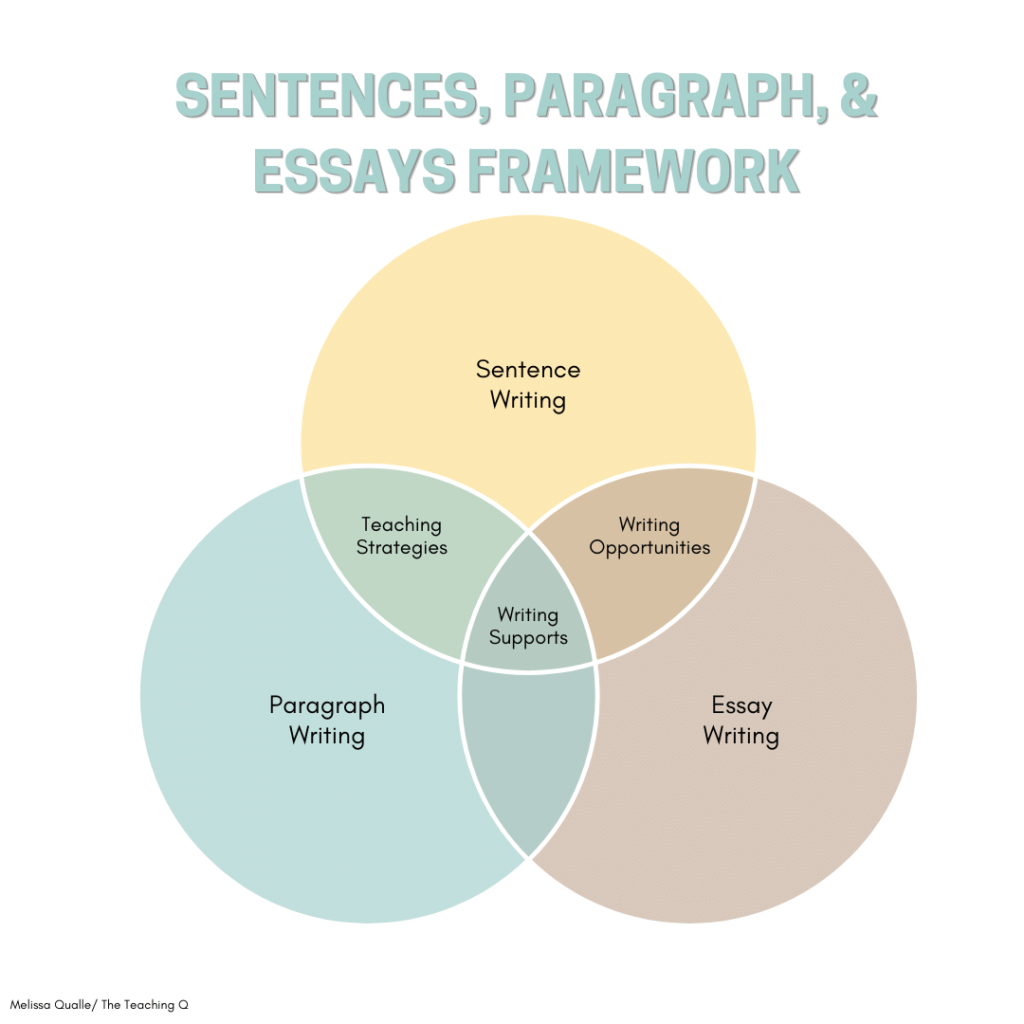
3 Key Focuses Points for a Writing Routine
Regardless of what works best for your student, there are three key areas every writer should focus on when creating a successful writing routine:
- pre-writing activities, practice sessions, and post-writing reviews. Pre-writing activities include outlining ideas or brainstorming. This helps writers to get organized and allows them to make sure they have all of the necessary components before they start writing.
- Practice sessions involve writing shorter pieces or drafts; this gives students a chance to practice their skills and get feedback on how their ideas are coming together.
- Finally, a post-writing review involves reading over what was written and ensuring it is as free from errors as possible.
I use these three key focuses when teaching my Sentences, Paragraphs, and Essays Framework.
Why Are Writing Routines Key to Success?
Routines are important because they provide structure and consistency. When students know what to expect and when to expect it, they can settle into their work more easily and be more productive. Routines also help students stay organized and on task, which is essential for success in writing.
By having a routine that focuses on these key areas, students will be well-prepared for tackling any writing assignment. It will also help them stay organized and motivated while ensuring they produce quality work each time they write. By fostering good habits early on, your students will be able to build confidence in themselves as writers, ultimately leading to greater success.
What Should Be Included in a Writing Routine?
When creating a writing routine, there are a few key areas to consider:
- Establishing a consistent schedule – Students must know when they’ll be doing their writing each day so they can plan accordingly and develop an efficient workflow that works best for them.
- Setting goals/expectations – Make sure your students have clearly defined goals to measure their progress and hold themselves accountable for meeting them. Also, make sure their expectations are realistic and achievable.
- Taking breaks – Breaks are essential for giving the mind time to rest and
Benefits of Having a Writing Routine
There are several benefits of having a writing routine for elementary-aged students.
- It helps them develop good writing habits.
- Teaches them how to budget their time wisely.
- Gives them practice in following directions.
- It helps them learn how to revise and edit their work.
- Perhaps most important, it instills in them a love for writing!
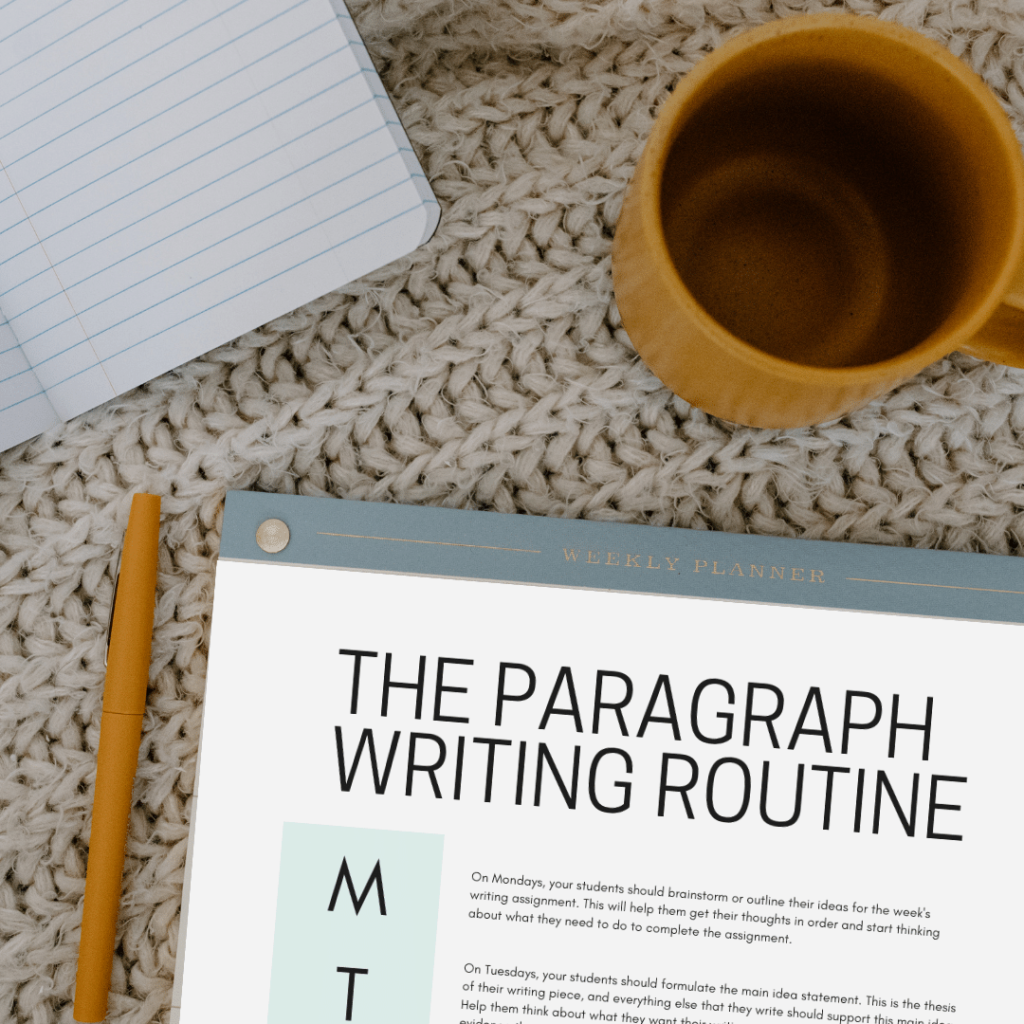
How to Create a Writing Routine
Creating a writing routine doesn’t have to be complicated. Just choose one or two key areas to focus on each day. For example, when working on paragraph writing skills, I set a different task for each day of the week to complete a paragraph.
- On Monday, the students analyze the prompt and write a brainstorm of ideas or basic outline for their writing.
- Then on Tuesdays, the students focus on writing a stellar topic sentence.
- Our Wednesday task is to write the supporting details and make sure to add elaboration, examples, or explanations.
- Thursday’s task is to write the concluding statement by rewording the topic sentence in unique words.
- On Friday, students are ready to peer edit with a partner and rewrite the entire paragraph in their best printing or cursive writing.
Or you might want to focus on different writing genres each day (e.g., Monday – informative; Tuesday – persuasive; Wednesday – narrative; Thursday – creative; Friday – review). I prefer to break down one type of genre for each day of the week, similar to the paragraph writing described above. You can grab a free copy of my Paragraph Writing Routine and a sample week here.
Whatever approach you take, the important thing is to ensure your students get regular practice, as mentioned in this blog post, in all the different types of writing they will encounter throughout their school careers.
The E-Book!
If you’re looking for more ideas on creating a writing routine that works for your elementary-aged students, be sure to check out my Sentences, Paragraphs, and Essays: Oh, my! E-book. You’ll love the tips, tricks, and activities to get your students excited about writing!
The Writing Routine Wrap-Up
Teachers know that “routine is key to success.” But what does that actually mean? And more importantly, how can you create routines that will set your students up for writing success? In this blog post, we’ve looked at the importance of routine in preparing students for writing success and explored some key areas to focus on when creating a writing routine. By focusing on one or two key areas each day and ensuring your students are getting regular practice in all the different types of writing they will encounter throughout their school careers, you’ll be well on your way to creating routines that set your students up for success!
Now that you know the importance of a writing routine, why not try it out yourself? Start with small steps and gradually build up to longer and more complex writing projects.
Your students will thank you later!
–Melissa


